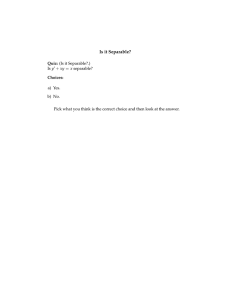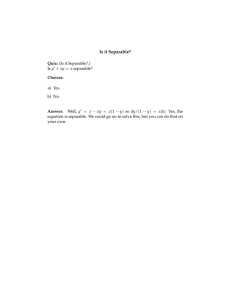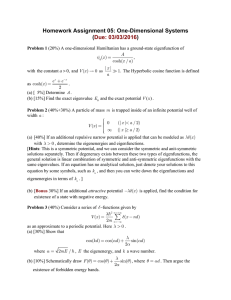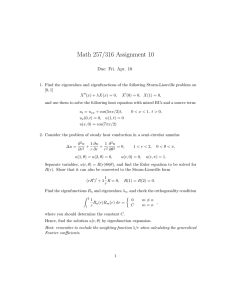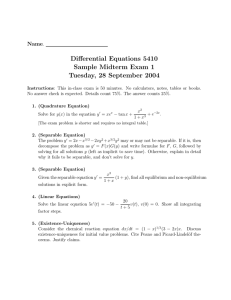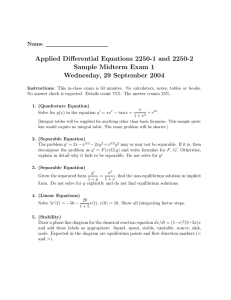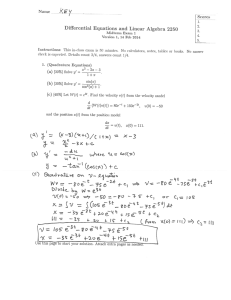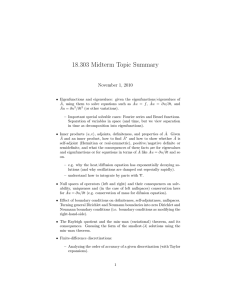Lecture 8
advertisement
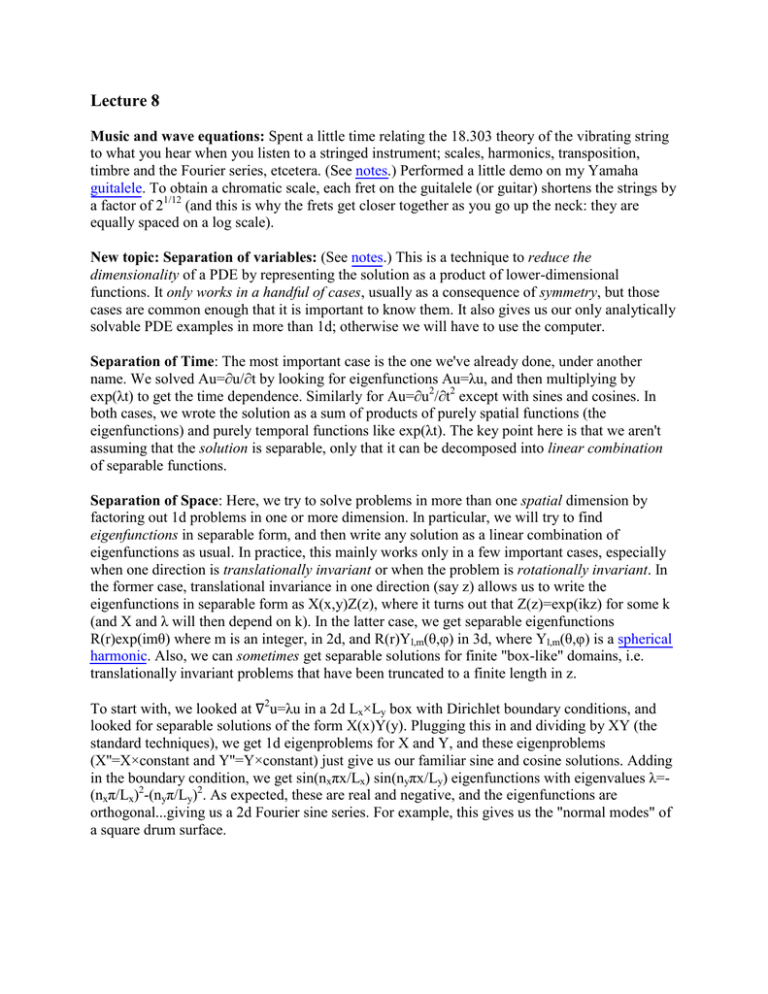
Lecture 8 Music and wave equations: Spent a little time relating the 18.303 theory of the vibrating string to what you hear when you listen to a stringed instrument; scales, harmonics, transposition, timbre and the Fourier series, etcetera. (See notes.) Performed a little demo on my Yamaha guitalele. To obtain a chromatic scale, each fret on the guitalele (or guitar) shortens the strings by a factor of 21/12 (and this is why the frets get closer together as you go up the neck: they are equally spaced on a log scale). New topic: Separation of variables: (See notes.) This is a technique to reduce the dimensionality of a PDE by representing the solution as a product of lower-dimensional functions. It only works in a handful of cases, usually as a consequence of symmetry, but those cases are common enough that it is important to know them. It also gives us our only analytically solvable PDE examples in more than 1d; otherwise we will have to use the computer. Separation of Time: The most important case is the one we've already done, under another name. We solved Au=∂u/∂t by looking for eigenfunctions Au=λu, and then multiplying by exp(λt) to get the time dependence. Similarly for Au=∂u2/∂t2 except with sines and cosines. In both cases, we wrote the solution as a sum of products of purely spatial functions (the eigenfunctions) and purely temporal functions like exp(λt). The key point here is that we aren't assuming that the solution is separable, only that it can be decomposed into linear combination of separable functions. Separation of Space: Here, we try to solve problems in more than one spatial dimension by factoring out 1d problems in one or more dimension. In particular, we will try to find eigenfunctions in separable form, and then write any solution as a linear combination of eigenfunctions as usual. In practice, this mainly works only in a few important cases, especially when one direction is translationally invariant or when the problem is rotationally invariant. In the former case, translational invariance in one direction (say z) allows us to write the eigenfunctions in separable form as X(x,y)Z(z), where it turns out that Z(z)=exp(ikz) for some k (and X and λ will then depend on k). In the latter case, we get separable eigenfunctions R(r)exp(imθ) where m is an integer, in 2d, and R(r)Yl,m(θ,φ) in 3d, where Yl,m(θ,φ) is a spherical harmonic. Also, we can sometimes get separable solutions for finite "box-like" domains, i.e. translationally invariant problems that have been truncated to a finite length in z. To start with, we looked at ∇2u=λu in a 2d Lx×Ly box with Dirichlet boundary conditions, and looked for separable solutions of the form X(x)Y(y). Plugging this in and dividing by XY (the standard techniques), we get 1d eigenproblems for X and Y, and these eigenproblems (X''=X×constant and Y''=Y×constant) just give us our familiar sine and cosine solutions. Adding in the boundary condition, we get sin(nxπx/Lx) sin(nyπx/Ly) eigenfunctions with eigenvalues λ=(nxπ/Lx)2-(nyπ/Ly)2. As expected, these are real and negative, and the eigenfunctions are orthogonal...giving us a 2d Fourier sine series. For example, this gives us the "normal modes" of a square drum surface. MIT OpenCourseWare http://ocw.mit.edu 18.303 Linear Partial Differential Equations: Analysis and Numerics Fall 2014 For information about citing these materials or our Terms of Use, visit: http://ocw.mit.edu/terms.
